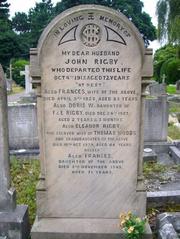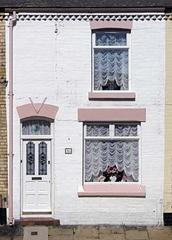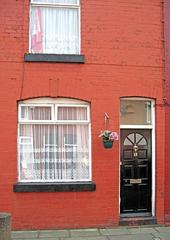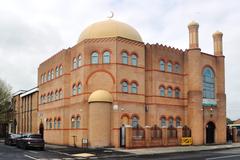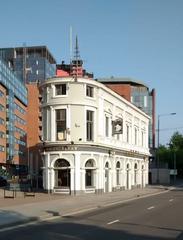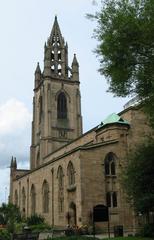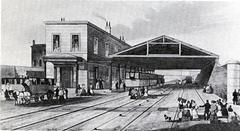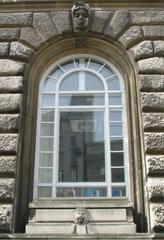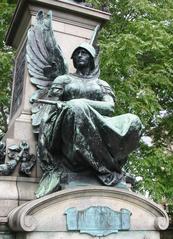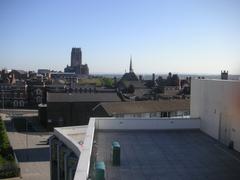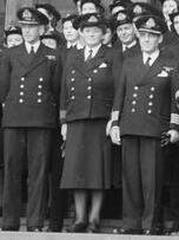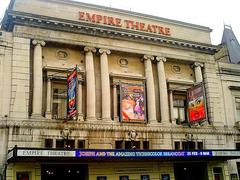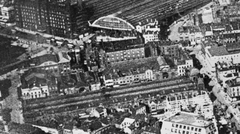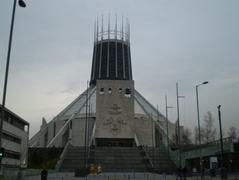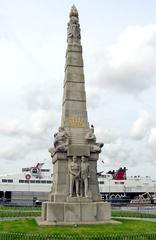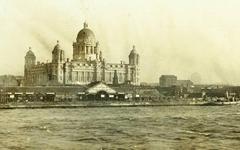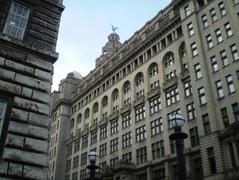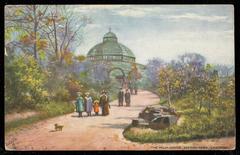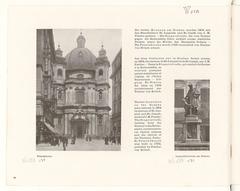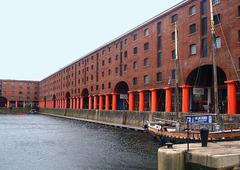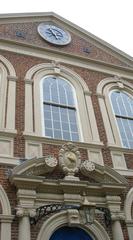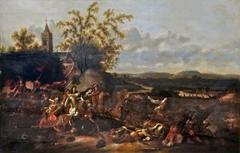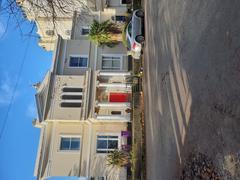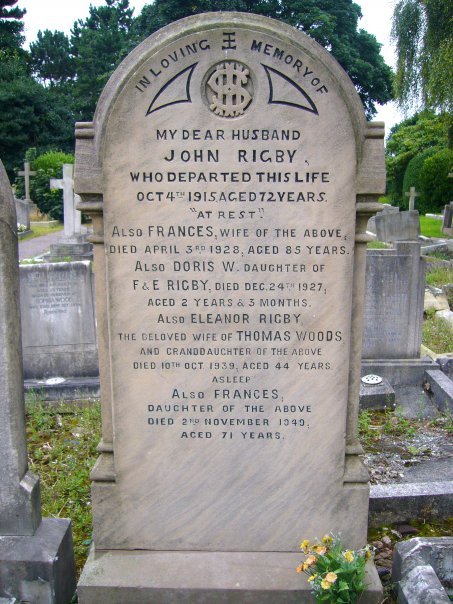
St. Peter’s Church Liverpool: Visiting Hours, Tickets, and Historical Sites Guide
Date: 15/06/2025
Introduction: Discovering St. Peter’s Church Liverpool
At the heart of Liverpool’s historical landscape, St. Peter’s Church stands as a testament to centuries of religious, architectural, and cultural evolution. Though the original Anglican St. Peter’s Church on Church Street was demolished in the early 20th century, its historical significance as one of Liverpool’s earliest major religious buildings and its former role as the city’s pro-cathedral remain vital elements in Liverpool’s spiritual heritage (Victorian Web; FamilySearch). Liverpool’s St. Peter’s legacy is also found in the Roman Catholic St. Peter’s on Seel Street—now a thriving venue that preserves its heritage architecture—and in the active St. Peter’s Church in Woolton, famed for its architectural beauty and its deep connection to The Beatles (St Peter’s Tavern; St Peter’s Church Woolton).
This comprehensive guide provides everything you need to explore these sites, from historical context and architectural highlights to practical information such as opening hours, ticketing, accessibility, travel tips, and nearby attractions. Whether you’re a history buff, architecture enthusiast, Beatles fan, or simply keen to discover Liverpool’s ecclesiastical landmarks, this guide will enrich your visit. Digital tools like audio guides and virtual maps are also available to enhance your experience (Nomadic Matt; Visit Liverpool).
Contents
- Introduction
- Historical Overview
- Architectural and Cultural Significance
- Visiting St. Peter’s Church Liverpool Today
- St. Peter’s Churches in Liverpool: Sites, History, and Visitor Information
- Practical Visitor Tips
- St. Peter’s Church Woolton: Visiting Details, History & Beatles Heritage
- Frequently Asked Questions (FAQ)
- Conclusion
- Further Resources and Links
- Call to Action
Historical Overview
Early Foundations
St. Peter’s Church traces its origins to the late 17th century as part of the ancient parish of Walton. Established as its own parish in 1698 to serve Liverpool’s growing population, the church was consecrated in 1704 and quickly became a focal point of religious and civic life (FamilySearch; Victorian Web). The structure was among the earliest purpose-built Anglican churches in the city, reflecting Liverpool’s emergence as a major port.
Architectural Evolution & Urban Context
Constructed in a functional, early 18th-century style, St. Peter’s Church was one of Liverpool’s oldest buildings by the 20th century. Its historical value was underscored by its role as one of only two buildings from its era still standing before its demolition (Victorian Web).
Cathedral Status and Ecclesiastical Role
In the 19th century, St. Peter’s was elevated to pro-cathedral status for the Diocese of Liverpool while the current cathedral was under construction. It also had a unique dual rectory arrangement with the nearby St. Nicholas chapel until the parishes were unified in 1838 (FamilySearch).
Social and Cultural Impact
St. Peter’s hosted countless ceremonies, gatherings, and community events, and its parish records remain a valuable genealogical resource (FamilySearch).
Demolition and Lasting Legacy
The church was demolished in the 20th century during urban redevelopment, but its memory endures through records, historical markers, and its enduring influence on Liverpool’s religious landscape (Victorian Web; History Hit).
Architectural and Cultural Significance
Architectural Features
St. Peter’s Church—particularly the Woolton site—is a distinguished example of English ecclesiastical architecture. The original Church Street building was simple yet stately, while the Woolton church (built in 1826) exemplifies the Gothic Revival style, featuring pointed arches, soaring ceilings, and intricate stained glass (Nomadic Matt).
- Sandstone exteriors and imposing towers serve as local landmarks.
- Interiors showcase Victorian stained glass, woodcarvings, and a historic organ.
- Artistic motifs include biblical scenes and local heritage references.
Cultural Context
St. Peter’s played a vital role in Liverpool’s growth, providing spiritual guidance and facilitating social reform during the city’s industrial expansion. It welcomed people of diverse backgrounds, reflecting the city’s cosmopolitan character and fostering a strong sense of community (Hey Explorer).
Urban Landscape
The church’s position within Liverpool—both as a historical landmark and, in the case of Woolton, as a community hub—ensures its place in the city’s architectural and cultural tapestry. Its proximity to other key sites makes it an ideal starting point for exploring Liverpool’s heritage (Nomadic Matt).
Visiting St. Peter’s Church Liverpool Today
Location and Accessibility
- Church Street Site: The original site is now part of the bustling shopping district; the location is marked by a brass Maltese cross on the pavement.
- Woolton Site: Located in the suburb of Woolton, accessible by public transit and with some on-street parking (St Peter’s Church Woolton).
Visiting Hours & Tickets
- Church Street Site: Open public space; no admission fee.
- Woolton Church: Open for visits Monday–Friday, 9:00 am–1:00 pm, and during Sunday services. Admission is free; donations are welcome (St Peter’s Church Woolton).
- Seel Street (St Peter’s Tavern): Open daily from 11:00 am to midnight (St Peter’s Tavern).
Guided Tours & Attractions
- Guided walking tours often include St. Peter’s sites.
- Nearby landmarks: Liverpool Cathedral, Royal Albert Dock, Bluecoat arts center, Walker Art Gallery, Beatles-related locations.
Photography Tips
Photograph the church exteriors, stained glass, and, in Woolton, the Eleanor Rigby grave. Always be respectful during services or private events.
St. Peter’s Churches in Liverpool: Sites, History, and Visitor Information
Anglican St. Peter’s Church (Church Street)
- History: Pro-cathedral from 1704 to 1919; demolished in 1922.
- Visiting Tips: The site is now part of the Church Street shopping district; look for the Maltese cross marker.
St. Peter’s Roman Catholic Church (Seel Street)
- History: Built in 1788; Liverpool’s oldest Catholic church until 1976. Now St Peter’s Tavern, a vibrant social venue.
- Visiting Tips: Enjoy preserved architectural features and occasional heritage tours (St Peter’s Tavern).
St. Peter’s Church, Woolton
- History: Active Anglican parish, built 1826, famous for its Beatles connection.
- Key Attractions: Eleanor Rigby’s grave, stained glass windows, regular concerts, and the site of the Lennon-McCartney meeting.
Practical Visitor Tips
- Transport: All sites are accessible by public transport; Woolton is best reached by bus.
- Accessibility: Woolton and Seel Street sites are generally accessible; contact ahead for specific needs.
- Amenities: City center sites have abundant nearby restaurants and shops; Woolton features village cafés and the Simon Peter Centre.
- Dress Code: Modest attire recommended, especially during services.
- Guided Tours: Available at Woolton by appointment; check for events at Seel Street.
St. Peter’s Church Woolton: Visiting Details, History & Beatles Heritage
Location
- Address: Church Road, Woolton, Liverpool, L25 5JF
- Access: Frequent buses from city centre; limited parking; charming walking routes (St Peter’s Church Woolton).
Hours & Tickets
- Office: Mon–Fri, 9:00 am–1:00 pm
- Church: Open during office hours and Sunday services
- Admission: Free; donations welcome
Architectural Highlights
- Grade II* listed building
- Sandstone exterior, prominent tower, spacious nave, Victorian stained glass, historic organ
Historical & Cultural Significance
- Key site in the Woolton community and Beatles history (site of Lennon-McCartney meeting, Eleanor Rigby grave)
- Hosts baptisms, weddings, funerals, and community events
Community & Events
- Annual fairs, concerts, educational workshops, charity initiatives
- Simon Peter Centre provides accessible event space
Beatles Heritage
- Eleanor Rigby’s grave attracts global visitors
- Beatles walking tours and themed events offered (Visit Liverpool)
Accessibility
- Ramps and accessible restrooms available; contact the office for specific needs
Travel Tips
- Best Times: Weekday mornings for quiet visits; summer and event days are busier
- Public Transport: Frequent buses from city centre
- Photography: Permitted outside of services
- Facilities: Simon Peter Centre offers restrooms and a café during events
Frequently Asked Questions (FAQ)
Q: Can I visit St. Peter’s Church Liverpool today?
A: The original Church Street church was demolished, but you can visit the site and other St. Peter’s churches in Liverpool.
Q: What are the visiting hours for St. Peter’s Churches?
A: Woolton: Mon–Fri 9:00 am–1:00 pm, Sunday services; Seel Street: from 11:00 am daily; Church Street site is open at all times.
Q: Are there any entry fees or tickets required?
A: No fees for any St. Peter’s sites; special events may require tickets.
Q: Are guided tours available?
A: Yes, at Woolton by appointment, and during special events at Seel Street.
Q: Is St. Peter’s Church accessible for visitors with disabilities?
A: Yes, with ramps and accessible restrooms at Woolton and Seel Street; contact ahead for specific requirements.
Q: Can I take photographs?
A: Yes, but please be considerate during services and private events.
Research and Genealogy Resources
Genealogy researchers can access historical parish records at the Liverpool Record Office and via the National Archives for further information on St. Peter’s records.
Contact Information
- St. Peter’s Woolton: c/o The Simon Peter Centre, Church Road, Woolton, Liverpool, L25 5JF
- Phone: +44 (0)151 428 6810
- Email: Contact via website
- Office Hours: Mon–Fri, 9:00 am–1:00 pm
Enhance Your Visit
Download the Audiala app for audio guides and exclusive content about St. Peter’s Church and other Liverpool sites. Follow us on social media and explore posts about Liverpool’s cultural and Beatles heritage.
Suggested Visuals:
- St. Peter’s Church Woolton exterior (alt: “St. Peter’s Church Woolton exterior showcasing sandstone architecture”)
- Eleanor Rigby grave (alt: “Eleanor Rigby grave in St. Peter’s Churchyard, Woolton”)
- Map of Woolton village with attractions (alt: “Map of Woolton village highlighting St. Peter’s Church and surroundings”)
Summary: Key Points for Visiting St. Peter’s Church Liverpool
St. Peter’s Church, in its various Liverpool incarnations, is central to the city’s religious, cultural, and social history. From the original Anglican church’s pivotal role to its legacy in records and urban memory, from Seel Street’s adaptive reuse as a social hub to Woolton’s vibrant parish and Beatles connections, these sites offer a unique window into Liverpool’s past and present (Victorian Web; FamilySearch; St Peter’s Tavern; St Peter’s Church Woolton; Visit Liverpool).
Accessible transport, guided tours, and nearby attractions make exploring these sites convenient and rewarding. Whether in person or digitally via tools like Audiala, St. Peter’s churches provide an enriching journey through Liverpool’s heritage (Nomadic Matt; Liverpool Record Office).
Sources and Official Links
- Victorian Web Liverpool Architecture
- FamilySearch Liverpool St. Peter’s Records
- St Peter’s Tavern Official Website
- St. Peter’s Church Woolton History
- Liverpool Tourism Official Site
- Nomadic Matt Liverpool Travel Guide
- Visit Liverpool Events
- Liverpool Record Office
- National Archives Liverpool Parish Records
Embark on your journey through Liverpool’s spiritual and cultural heart—plan your visit to St. Peter’s Church today!
